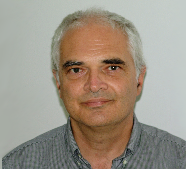|
|||||||||||||||||||||||||||||||||||||||||||||||||||||
|
|||||||||||||||||||||||||||||||||||||||||||||||||||||
|
|
|||||||||||||||||||||||||||||||||||||||||||||||||||||
|
|||||||||||||||||||||||||||||||||||||||||||||||||||||
|

At the University of Illinois at Chicago, Professor Alexander Yarin and his team use agro-waste materials derived from various plants and animals to form nanofibers. Such nanofibers possess important properties, which are of interest for various applications. The group demonstrated that the method they employ (solution blowing) can be implemented on the industrial scale using commercially available equipment.
At the XVI B-MRS Meeting (September 10-14, Gramado, Brazil), Yarin will deliver a plenary lecture on the fabrication and properties of these nanofibers formed from different agro-waste materials, and will show the results of their application as biomedical materials and adsorbents useful for heavy metal ion removal from polluted water. He will also discuss potential applications of such biodegradabe and biocompatible nano-textured membranes for protection of pruned plants from esca fungi and against mold invasion in wood.
Alexander L. Yarin graduated in Applied Physics from the Polytechnical Institute of St. Petersburg (Russia) in 1977. Then he moved to Moscow to the Institute for Problems in Mechanics of the USSR Academy of Sciences, where he remained until 1990 working as a researcher. In 1980, he received PhD in Physics and Mathematics and, in 1989, habilitation (DSc), both from the Institute for Problems in Mechanics. In parallel, Yarin was an adjunct Professor at the Physico-Technical Institute and at the Aviation Technology Institute in Moscow.
From 1990 to 2006, he was a Professor at the renowned Israeli university Technion (Israel Institute of Technology), where he held, from 1999, the Eduard Pestel Chair of Mechanical Engineering. During his sabbaticals, he was a visiting Professor at two American institutions, the University of Wisconsin-Madison (1996-1997) and the University of Illinois at Chicago (2003-2004).
Since 2006, Alexander Yarin is a Distinguished Professor of the Department of Mechanical and Industrial Engineering at the University of Illinois at Chicago. At this University, Yarin heads the Multiscale Mechanics and Nanotechnology Laboratory, a space of more than 2,200 square feet dedicated to the experimental and theoretical investigation of the mechanics of fluids and solids, mainly in the scale that ranges from a few millimeters to the nanometers.
Yarin is a Fellow of the American Physical Society (APS). He is an Associate Editor of the journal “Experiments in Fluids” and a member of the editorial boards of “Archives of Mechanics” and “Electrospinning”. He is a member of the International Editorial Advisory Board of the Bulletin of the Polish Academy of Sciences and a co-Editor of Springer Handbook of Experimental Fluid Mechanics published in 2008. He has received distinctions from the Israel Academy of Sciences and Humanities and from Technion (Israel), from the American Technion Society and the American Physical Society (United States), from the Technical University Darmstadt (Germany), from the Society of Mechanics of Taiwan, and from Elsevier, among others.
Owner of an h index of 54, Professor Yarin is the author of 4 books, 12 book chapters, 6 patents and about 300 scientific articles. His academic production has more than 21,500 citations, according to Google Scholar.
B-MRS newsletter: – In your plenary talk, you will talk about materials obtained by the process of solution blowing. Describe in few words what this process consists of and whether it is already used on an industrial scale.
Alexander Yarin: – Solution blowing is a relatively novel process designed to form monolithic and core-shell nanofibers from petroleum-derived and biopolymers derived from agro-waste (the latter are discussed in detail in the present talk). In this process, a slowly moving polymer solution jet is issued into a high-speed subsonic coaxial air jet. As a result, the polymer solution jet is stretched, then bends due to the aerodynamically-driven bending instability which causes dramatic stretching and thinning. In parallel, solvent evaporates, and precipitated dry nanofibers are deposited on a target surface in the form of a nonwoven mat. Recently, the solution blowing process was demonstrated using an industrially-available equipment and nanofiber mats containing soy protein were formed.
B-MRS newsletter: – What, in your opinion, are your main scientific or technological contributions to the field of nanofibers and related topics? Feel free to share some (few) references if you wish.
Alexander Yarin: – The explanation and theoretical description of the physical mechanisms involved in solution blowing and electrospinning, novel experimental methods and approaches, a wide usage of biopolymers, in particular, those derived as by-products of biofuel production, development of novel applications. Two recent comprehensive monographs outline many of the above-mentioned results:
B-MRS newsletter: – If you desire, leave an invitation to your plenary talk.
Alexander Yarin: – Green nano-textured materials can become such great scorers as Pele! Come and see how.
More information
On XVI B-MRS Meeting website, click on the photo of Alexander Yarin and see his mini CV and the abstract of his plenary lecture: http://sbpmat.org.br/16encontro/home/